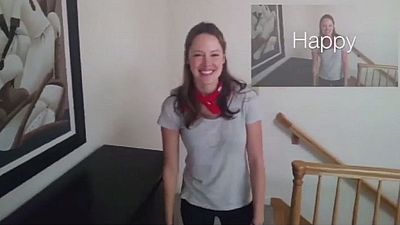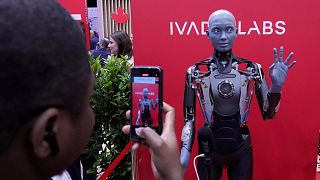USA
Researchers at Stanford University in the US are using special software to help autistic children recognise and classify emotions.
The so-called ‘Autism Glass’ analyses facial expressions – and instantly gives the user an indication of the emotion.
Researchers say the aim is to boost the confidence of users, when they’re in social settings.
“The Autism Glass program is meant to teach children with autism how to understand what a face is telling them, period. And we believe that when that happens they will become more socially engaged, and as a consequence of that gain confidence in social settings. The access to care is too limited. So kids with autism are not getting enough of the care that they need, for as long as they need it in the United States and we need to fix the problem,” said Dennis Wall, the Wall Lab director at Stanford University School of Medicine.
Reading emotions is one of the biggest challenges for those with autism, like Julian Brown.
He’s wearing the Autism Glass technology for an hour a day, while interacting with family members.
The software runs on Google Glass, the computerised eyewear developed by Google.
“There’s not a machine that can read your mind. But this helps with the emotions, you know, recognising them,” said the patient in Autism Glass Project.
Stanford student Catalin Voss and researcher Nick Haber developed the software to analyse faces.
Software that recognises our common emotions – such as happy, angry, sad and surprised.
“We had the idea of basically creating a behavioural aide that would recognise the expressions and faces for you and then give you social cues according to those,” said Catalin Voss.
Julian is one of a hundred or so autistic children taking part in the Stanford University study.
The idea is to develop the Autism Glass into an affordable and convenient therapy which families can use at home.
Julian’s mother is encouraged by the research – and thinks it has great potential.
“I think the glass is a great way to get kids to relate better, to not just their family but to the peers around them. If they can break that barrier, then man oh man, these high-functioning kids, you wouldn’t feel like labeling them so much,” she said.
Future work will allow researchers to improve the software and techniques – using a widening set of data.
If the results are positive, the product could be commercially available within a few years.
Cutting-edge technology which has the potential to help Julian and others with autism.














11:17
Bridging the legal gap in Africa’s digital boom {Business Africa}
02:07
Morocco explores its digital future at the 2025 Morocco Gaming Expo
01:37
Sudan faces rapidly-spreading cholera outbreak, 1000 daily cases in capital
Go to video
World's first robot boxing contest packs punch to optimize future algorithms
Go to video
Immunization at risk: Global health leaders urge action amid rising disease outbreaks
01:50
Robot waiter becomes a star attraction at Havana restaurant